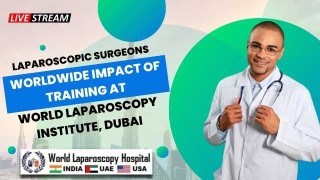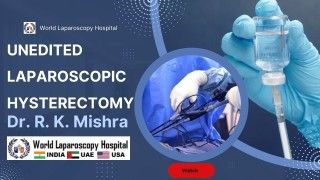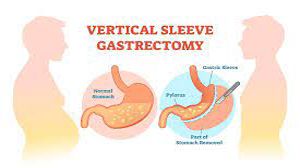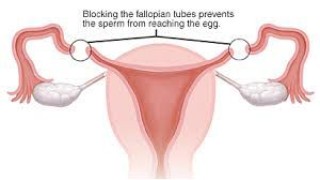Minimally Invasive Approach to Swiss Cheese Incisional Hernia Repair: A Laparoscopic Solution
Add to
Share
1,531 views
Report
1 year ago
Description
Minimally Invasive Approach to Swiss Cheese Incisional Hernia Repair: A Laparoscopic Solution Incisional hernias are a frequent complication following abdominal surgeries, characterized by the protrusion of tissue or organs through a weakened area in the abdominal wall. Among these, the "Swiss cheese" hernia presents a particularly challenging case due to its multiple small defects, resembling the holes in Swiss cheese. These defects make the repair complex, as traditional methods may not provide the comprehensive closure required to prevent recurrence. However, recent advancements in minimally invasive techniques, particularly laparoscopic surgery, offer a promising solution for effective repair. Understanding the Swiss Cheese Hernia Swiss cheese hernias are aptly named because of their resemblance to the famous cheese: they feature multiple small holes rather than a single, large defect. These holes are usually scattered across the abdominal wall, resulting from prior surgical interventions that have weakened various parts of the fascia. The distribution of the defects makes traditional open repairs difficult, as each defect must be addressed individually, requiring extensive dissection and tissue manipulation. Laparoscopic Approach: The Minimally Invasive Revolution Laparoscopic surgery, a key advancement in minimally invasive techniques, offers a significant advantage in addressing the complexities of Swiss cheese hernias. This method involves the use of small incisions, through which a camera (laparoscope) and specialized instruments are inserted. The laparoscopic approach allows surgeons to explore the entire abdominal wall and repair multiple defects with precision, while minimizing trauma to the surrounding tissue. Key Advantages of Laparoscopic Repair: 1. Comprehensive Visualization: Laparoscopic techniques provide superior visualization of the abdominal cavity, enabling the surgeon to detect and assess even the smallest hernia defects that may not be easily seen in open surgery. 2. Reduced Trauma: The minimally invasive nature of laparoscopy reduces the need for large incisions, minimizing tissue damage and promoting faster healing. 3. Lower Recurrence Rates: With enhanced visualization, surgeons can identify and repair all defects in one procedure, reducing the risk of missed defects and the potential for hernia recurrence. 4. Faster Recovery: Patients undergoing laparoscopic repair typically experience shorter hospital stays, less postoperative pain, and quicker return to daily activities compared to those undergoing open surgery. 5. Cosmetic Benefit: Laparoscopic surgery requires smaller incisions, resulting in less scarring compared to traditional open surgery, an important factor for patient satisfaction. Laparoscopic Technique for Swiss Cheese Hernia Repair The laparoscopic technique for repairing a Swiss cheese hernia involves several critical steps: 1. Port Placement: Small incisions (typically 5 to 10 mm) are made in the abdomen to introduce the laparoscope and instruments. The number of ports will depend on the size and location of the hernia defects. 2. Defect Identification: Using the laparoscope, the surgeon thoroughly inspects the abdominal wall to identify all hernia defects. This comprehensive visualization ensures that no defect is missed, which is essential in cases with multiple holes. 3. Mesh Placement: Once all defects are identified, a large piece of synthetic mesh is placed to cover the entire weakened area of the abdominal wall. The mesh acts as a scaffold, providing support to the damaged tissue and preventing future hernias from forming. The mesh is secured in place using sutures or tacks. 4. Tissue Reinforcement: Depending on the size and number of defects, the surgeon may also reinforce the repair by suturing some of the larger defects before placing the mesh. 5. Closure: After the mesh is secured, the instruments are removed, and the small incisions are closed with sutures or surgical glue. The patient is then moved to recovery, where the postoperative healing process begins. Postoperative Care and Outcomes Patients undergoing laparoscopic repair for Swiss cheese hernias generally recover faster and experience fewer complications than those undergoing open surgery. Postoperative pain is typically less severe, and patients can resume normal activities more quickly. Most patients are discharged from the hospital within 24 to 48 hours, depending on the extent of the repair and their overall health. Studies have shown that the laparoscopic approach to incisional hernia repair results in lower rates of hernia recurrence and infection compared to traditional open repair. The comprehensive nature of the repair, combined with the reduced trauma to surrounding tissues, makes this a preferred approach for many surgeons. Conclusion The laparoscopic approach to Swiss cheese incisional hernia repair represents a significant advancement in hernia surgery. With its minimally invasive nature, superior visualization, and effective repair techniques, this method offers patients a quicker recovery, reduced pain, and a lower risk of recurrence. As laparoscopic surgery continues to evolve, it is becoming the gold standard for managing complex hernia repairs, providing a promising solution to one of the most challenging types of incisional hernias.
Similar Videos






